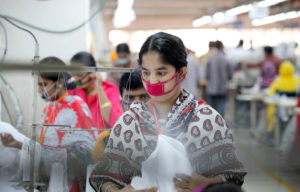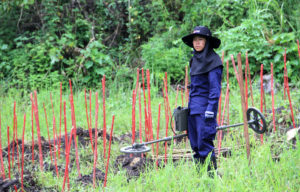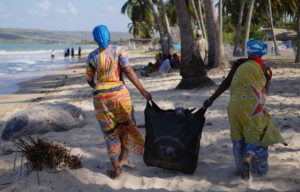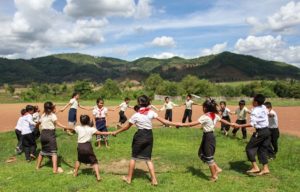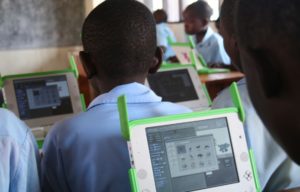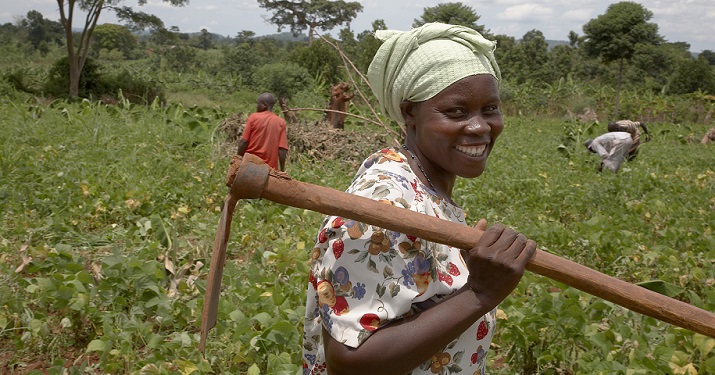
Department of Foreign Affaird and Trade / CC BY
Making emergency aid work for the long term
WFP increasingly buys food for humanitarian aid from the world’s poorest farmers, making the aid money work for long-term development.
Share
Purchase for Progress
P4P generated 148 million dollars of income for farmers between 2009-2014, with WFP buying a total of 370.000 metric tons of food.
Through P4P, the farmers were connected to private markets that ensured a further 60 million dollars of income.
More than 800.000 smallholder farmers have received training and support through P4P and affiliated parnerships.
Other categories
“Even if helicopter drops with food for people in urgent emergencies are happening now and will still happen in the future, at the same time we will see much a bigger focus on sustainable food distribution in the future”, Ahnna Gudmunds says. She is a communications officer at the World Food Programme (WFP), the largest humanitarian agency fighting hunger in the world.
Last year, WFP helped 80 million people with food assistance, 42 million of whom were in emergencies, like refugees from Syria or Ebola stricken countries in West Africa, spending more than 5 billion dollars on food in 2014.
“Since we already buy so much food, we thought, how do we make small farmers and rural agriculture communities benefit from this? That’s what we’re working on.” Ahnna Gudmunds explains.
Reaching the poorest
Ahnna Gudmunds works on a WFP project called P4P – Purchase for Progress. Normally, WFP buys food from big companies. But in 20 pilot countries across the world, from Burkina Faso to El Salvador, WFP has experimented with buying food directly from the poorest farmers. The aim is to link farmers to better markets – many small farmers sell their crops straight form their fields immediately after harvesting when prices are lowest, becausee they need cash in hand. Through the P4P initiative, WFP contracts with farmers before the harvest, guaranteeing them a fair price. Farmers then have a stable income and an incentive to better their business by investing to produce better quality crops that meet WFP quality demands.
In this way, the money spent on food for humanitarian aid can also work for long-term development. When Ebola plagued Western Africa in 2014, WFP bought food for quarantined patients – for example, 250 metric tons of rice from 25 small-scale farmer’s organizations in Liberia.
“If you want to raise the income for the poorest, if you want to reach people in the most rural areas, agricultural growth is the most effective sector to work in”, says Ahnna Gudmunds.
Thus, P4P works with Farmer’s Organizations mainly made up of farmers with very small plots of land. About 1,7 million farmers are part of the almost 900 Farmer’s Organizations that work with P4P. After a successful pilot phase, WFP is scaling up the initiative. The goal is that 10 percent of the food WFP buys globally should come from smallholder farmers.
Experimental attitudes
In P4P, it is not enough to just buy repeatedly from small farmers, Ahnna Gudmunds explains. They want to strengthen capacity in every link in the chain from farmers, to Farmer’s Organizations, crop buyers and storage companies, as well as the national governments. They provide technical training, help farmers gather in cooperatives so they can more easily sell to bigger buyers, teach finance, management and logistics and even train farmers in gender issues.
“WFP is only one part of the puzzle. We work with 500 different partnerships in 20 countries. National governments, local NGOs, international NGOs, the private sector, universities. The biggest lesson is that there is no single model that works everywhere. We set out to test different models and learn about what works best”, Ahnna Gudmunds points out.
In countries like Malawi and Honduras, WFP works with the host governments to provide food to school meals, which in turn has a big impact on the number of children attending school. Through P4P the food is bought from small, local farmers, often the parents of the school kids, who, because of the stable income from sales to the schools, don’t need their kids to stay at home and help on the farm.
In Afghanistan, where malnutrition is high and half the children experience stunting, WFP focus on providing nutrition rich foods. P4P buys grain from local farmers, work together with private owned mills and have installed a mobile factory making High Energy Biscuits, which is run by a local company. The factory then sells majority of the biscuits to WFP, which donates them to Afghanis in need. The rest of the biscuits the company sells privately.
From aid to assistance
In the example of the Afghan biscuit factory, the last part is very important.
“If you want a sustainable solution, you need private partners. You need to strengthen local markets and the capacity of the farmers so they can engage with them”, Ahnna Gudmunds says. “We don’t want farmers to be dependent on WFP”.
WFP has had a strategy of moving “from aid to assistance” for many years. Some 80 percent of its food are bought from developing countries, which benefit from WFP’s many resources.
P4P is one of the clearest, most innovative examples of that. Other examples of humanitarian aid money working the long-term game is WFP’s food-for-assets programme, where poor people for example receive food for work or school hours.
“Agriculture and market development is very complex and I would lie if I said there are no challenges working with small farmers instead of buying food from big companies, but we have started to see some very sustainable results. There will be much more of this in the future”, Ahnna Gudmunds says.
